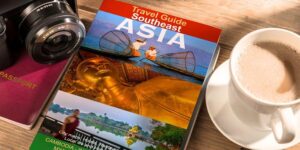Quick Links:
Travel Guides | Travel Gear | Packing Lists | Resources & Tools
Marrakech is a sensory overload in the best possible way, with its bustling souks, ornate palaces, and fragrant gardens. The city’s medina, a UNESCO World Heritage site, is a labyrinth of narrow alleys filled with artisans, street food vendors, and hidden riads. Visitors can experience traditional hammams, explore the vibrant Jardin Majorelle, and watch the spectacle of Djemaa el-Fna square come alive at night. Marrakech offers an authentic taste of North African culture and history.
Best Things to Do
Search and Compare flight deals
Deals from your favorite airlines.
Best Hotels in Marrakech
Why to Go:
- Historic Medina: The heart of Marrakech is its historic Medina, a UNESCO World Heritage site filled with narrow winding streets, vibrant souks, and stunning architecture. The Koutoubia Mosque, with its iconic minaret, is a must-see landmark that exemplifies the city’s rich Islamic heritage.
- Jemaa el-Fnaa Square: This famous square is the lively center of Marrakech, bustling with activity day and night. Visitors can experience street performances, local musicians, and traditional storytellers. As night falls, the square transforms into a vibrant food market, offering a variety of Moroccan dishes.
- Stunning Palaces and Gardens: Marrakech is home to several beautiful palaces and gardens. The Bahia Palace is known for its intricate architecture and lush gardens, while the Majorelle Garden, designed by French painter Jacques Majorelle, features exotic plants and vibrant blue buildings. The garden is also home to the Yves Saint Laurent Museum, celebrating the designer’s connection to Marrakech.
- Traditional Souks: The souks of Marrakech offer a sensory overload of colors, scents, and sounds. Visitors can shop for traditional Moroccan handicrafts, textiles, ceramics, and spices. The souk experience is not just about shopping; it’s an opportunity to immerse yourself in local culture and craftsmanship.
- Culinary Delights: Moroccan cuisine is a highlight of any visit to Marrakech. Visitors can indulge in traditional dishes like tagine, couscous, and pastilla. Cooking classes and food tours are available for those looking to learn more about the local culinary traditions.
- Hammams and Spas: A visit to a traditional hammam (steam bath) is a quintessential Moroccan experience. Marrakech offers numerous hammams and spas where visitors can enjoy relaxing treatments, massages, and scrubs, making it a perfect way to unwind after a day of exploring.
- Cultural Festivals: Marrakech hosts various cultural festivals throughout the year, including the Marrakech International Film Festival and the Marrakech Popular Arts Festival. These events showcase local and international talent, providing a vibrant atmosphere for visitors.
- Day Trips and Excursions: Marrakech serves as a great base for exploring the surrounding regions. Day trips to the Atlas Mountains, Ouzoud Waterfalls, and the Sahara Desert offer opportunities for hiking, camel trekking, and experiencing Morocco’s diverse landscapes.
- Vibrant Nightlife: The nightlife in Marrakech is lively and diverse, with options ranging from traditional music venues to modern bars and clubs. The city’s rooftop lounges offer stunning views of the Medina and the Atlas Mountains, making for a memorable evening out.
- Warm Hospitality: Moroccan culture is known for its hospitality, and visitors to Marrakech often experience the warmth and friendliness of the locals. Staying in a traditional riad (guesthouse) provides a unique and intimate experience, allowing guests to enjoy authentic Moroccan hospitality.
On a similar note...
-

8 Airport Safety Tips: How to Keep Your Stuff Safe
-

7 TSA Secrets You Need to Know
-
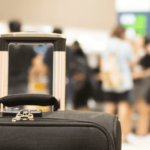
The 10 Best Airport Tips and Secrets
-

Cappadocia, Turkey Travel Guide
-

Amalfi Coast, Italy Travel Guide
-
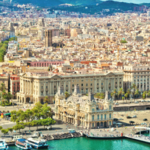
Barcelona, Spain Travel Guide
-
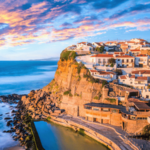
Sintra, Portugal Travel Guide
-

Marrakech, Morocco Travel Guide
-
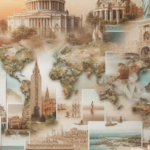
World's Best Places to Visit near me
-

Palm Springs, USA Travel Guide
Marrakech Travel Tips
Best Months to Visit
The best time to visit Marrakech is during the spring (March to May) and autumn (September to November) months. During these periods, the weather is mild and pleasant, making it ideal for exploring the city’s vibrant markets, historic sites, and beautiful gardens. Summer (June to August) can be extremely hot, with temperatures often exceeding 40°C (104°F), while winter (December to February) is cooler and can be rainy, but still offers a pleasant escape from colder climates.
The Weather on Marrakech
Marrakech experiences a semi-arid climate with hot, dry summers and mild, wet winters. Summer temperatures (June to August) range from 30°C (86°F) to 45°C (113°F), making outdoor activities challenging during the peak heat. Spring and autumn offer the most comfortable weather, with temperatures between 15°C (59°F) and 28°C (82°F). Winters (December to February) are cooler, with temperatures between 6°C (43°F) and 18°C (64°F), and occasional rain showers.
How to Save Money on Marrakech
Travel Off-Peak: Visit during the shoulder seasons (March to May and September to November) to enjoy lower accommodation prices and fewer tourists.
Stay in Riads: Opt for staying in traditional Moroccan riads (guesthouses) in the Medina. They offer an authentic experience and are often more affordable than hotels.
Eat Locally: Dine at local eateries and street food vendors to enjoy delicious Moroccan cuisine at a fraction of the cost of tourist restaurants.
Bargain Shopping: When shopping in the souks (markets), don’t hesitate to haggle for a better price. Bargaining is a common practice in Marrakech.
Free Attractions: Explore free attractions such as the Jemaa el-Fnaa square, the Medina’s narrow streets, and public gardens like the Majorelle Garden.
Download for FREE
Travel Budget Planner & Checklist in Excel
Start using the Ultimate Travel Budget Planner and Checklist in Excel today, and embark on your dream trip without the stress of overspending. Happy Travel!
Download!What to Eat
Marrakech offers a rich culinary experience with a variety of traditional Moroccan dishes:
Tagine: A slow-cooked stew made with meat (chicken, beef, or lamb), vegetables, and a blend of spices, cooked in a clay pot.
Couscous: A staple dish made from steamed semolina grains, often served with meat and vegetable stews.
Pastilla: A savory-sweet pastry filled with spiced meat (usually pigeon or chicken) and almonds, dusted with powdered sugar and cinnamon.
Harira: A traditional Moroccan soup made with tomatoes, lentils, chickpeas, and lamb, often eaten to break the fast during Ramadan.
Mint Tea: Morocco’s famous sweet mint tea, a staple drink enjoyed throughout the day.

The FREE Packing Guide for All-Inclusive Trips
Download our fillable and printable packing list + tips + more!
Safety
Marrakech is generally safe for tourists, but it’s important to take standard precautions:
Petty Theft: Be cautious of pickpockets, especially in crowded areas and markets. Keep your belongings secure.
Scams: Be aware of common scams, such as unofficial guides offering their services or vendors overcharging tourists. Always agree on prices in advance.
Traffic: Traffic in Marrakech can be chaotic. Be careful when crossing streets and consider using reputable taxi services.
Health Precautions: Drink bottled water to avoid stomach issues, and apply sunscreen to protect against the strong sun.
Respect Local Customs: Dress modestly, especially when visiting religious sites, and be mindful of local customs and traditions.
Getting Around
Walking: Many of Marrakech’s attractions, particularly in the Medina, are best explored on foot. Walking allows you to fully experience the city’s vibrant atmosphere.
Taxis: Taxis are readily available and affordable. Make sure to agree on the fare before starting your journey or ensure the meter is running.
Buses: The local bus system is cheap and covers major routes, but it can be crowded and confusing for first-time visitors.
Car Rentals: Renting a car is an option for exploring beyond Marrakech, but driving in the city can be challenging due to traffic and narrow streets.
Horse-Drawn Carriages: Known as calèches, these traditional carriages offer a scenic and leisurely way to explore the city.
Entry & Exit Requirements
Visa Requirements: Many nationalities, including those from the USA, Canada, EU countries, and Australia, can enter Morocco visa-free for up to 90 days. Check the latest visa requirements based on your nationality.
Passport Validity: Ensure your passport is valid for at least six months beyond your planned date of departure from Morocco.
Customs Regulations: Familiarize yourself with customs regulations regarding what you can bring into and take out of Morocco. Common restrictions include limits on alcohol, tobacco, and currency.
Health Requirements: No specific vaccinations are required for entry into Morocco, but it’s always a good idea to check the latest health advisories and ensure you have travel insurance that covers medical emergencies.
Final Thoughts
Marrakech, with its bustling souks, historic palaces, and vibrant culture, is a captivating destination that offers a blend of old-world charm and modern excitement. Whether you’re exploring the intricate alleyways of the Medina, savoring the rich flavors of Moroccan cuisine, or relaxing in a tranquil riad, Marrakech promises an unforgettable experience. By planning your trip wisely and taking advantage of local tips, you can enjoy the magic of this enchanting city without breaking the bank.
Recommended for You
If you’ve ever faced the dilemma of wanting to freshen...
As we step into the future of travel, the landscape...
Traveling can be hard on your nails. Changes in climate,...
Author

Cotripia is your gateway to elevated travel. We serve as your portal to the world of stylish travel, exquisite beauty products, luggage, and all the vital travel essentials. Furthermore, we provide an array of valuable resources, including expertly crafted packing guides, meticulous checklists, insider tips, enlightening ebooks, and much more.
View all posts






